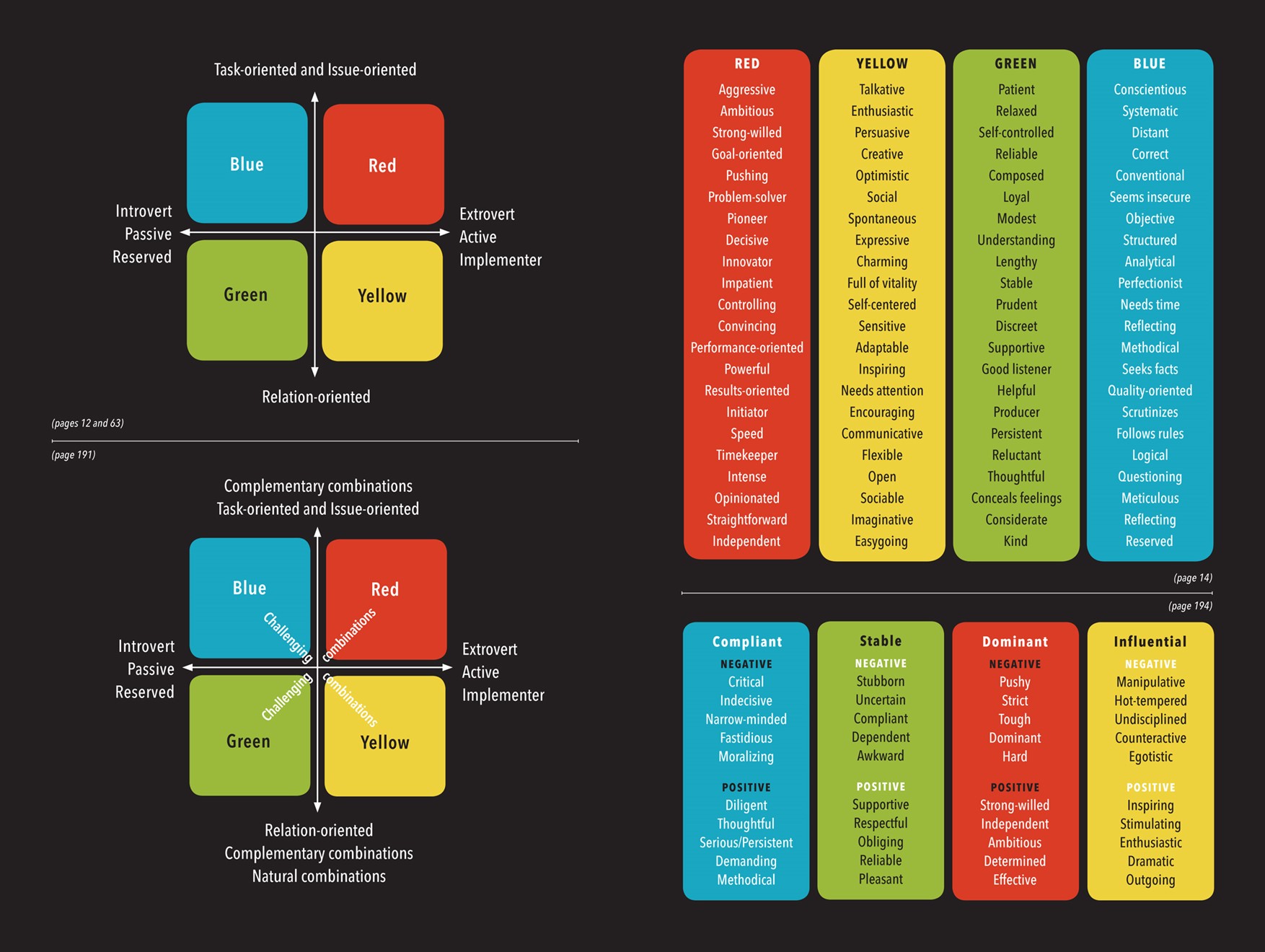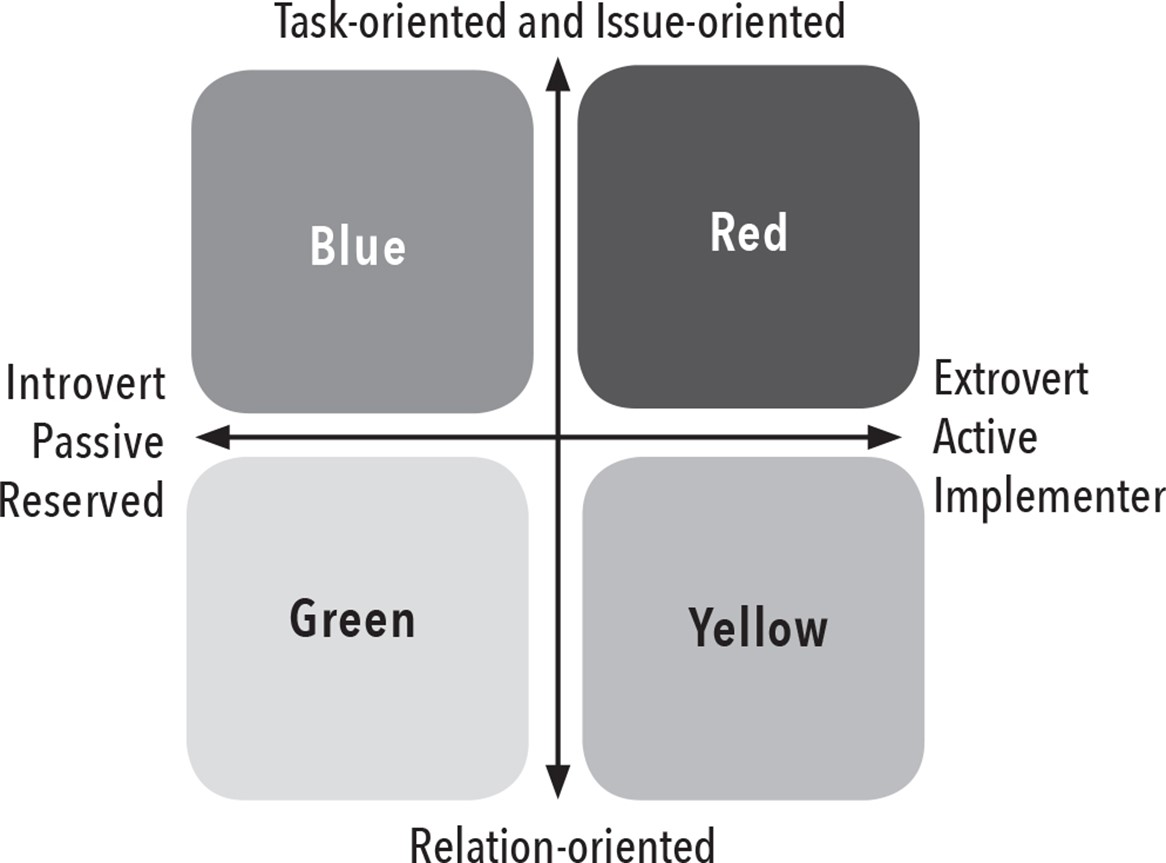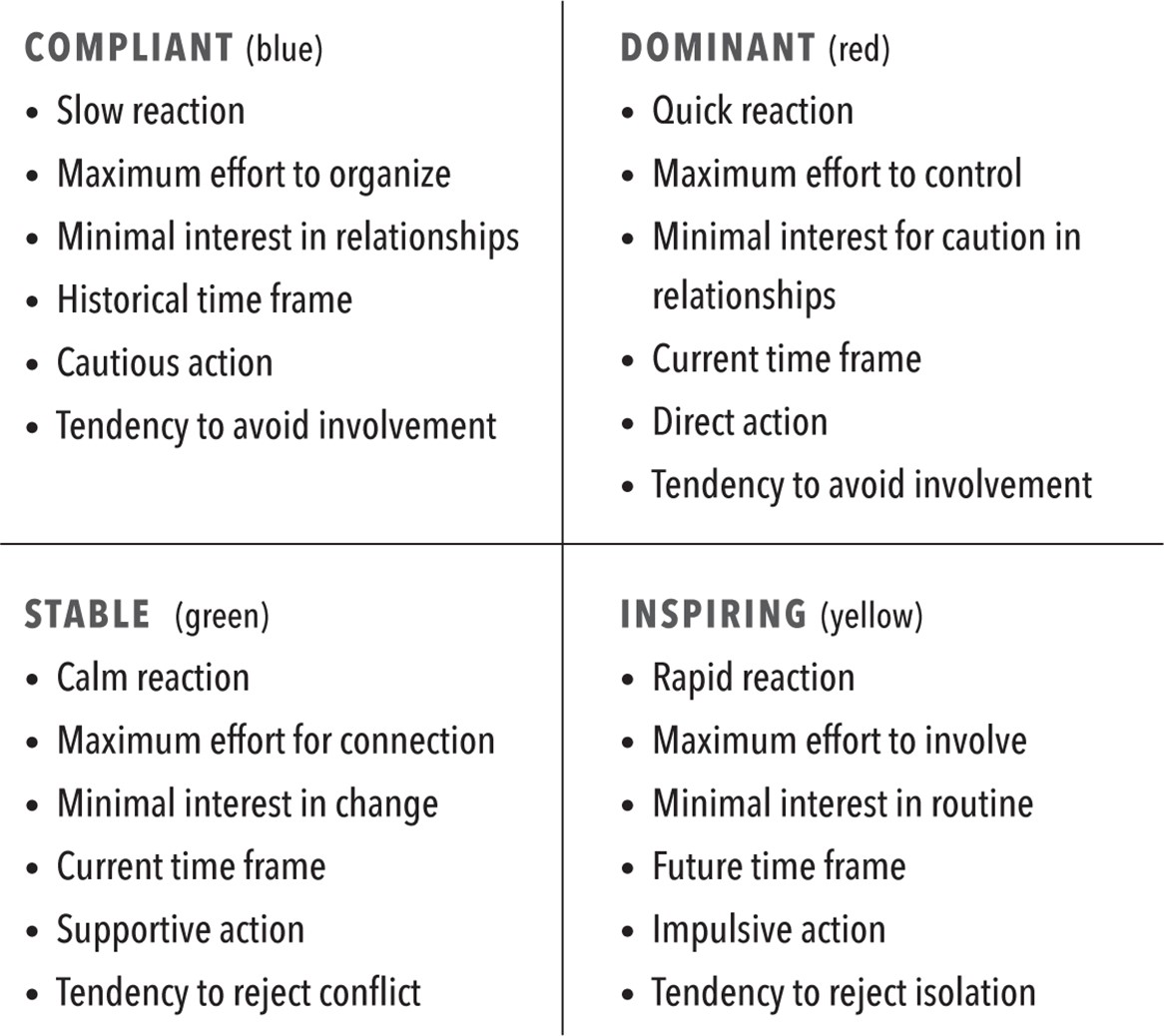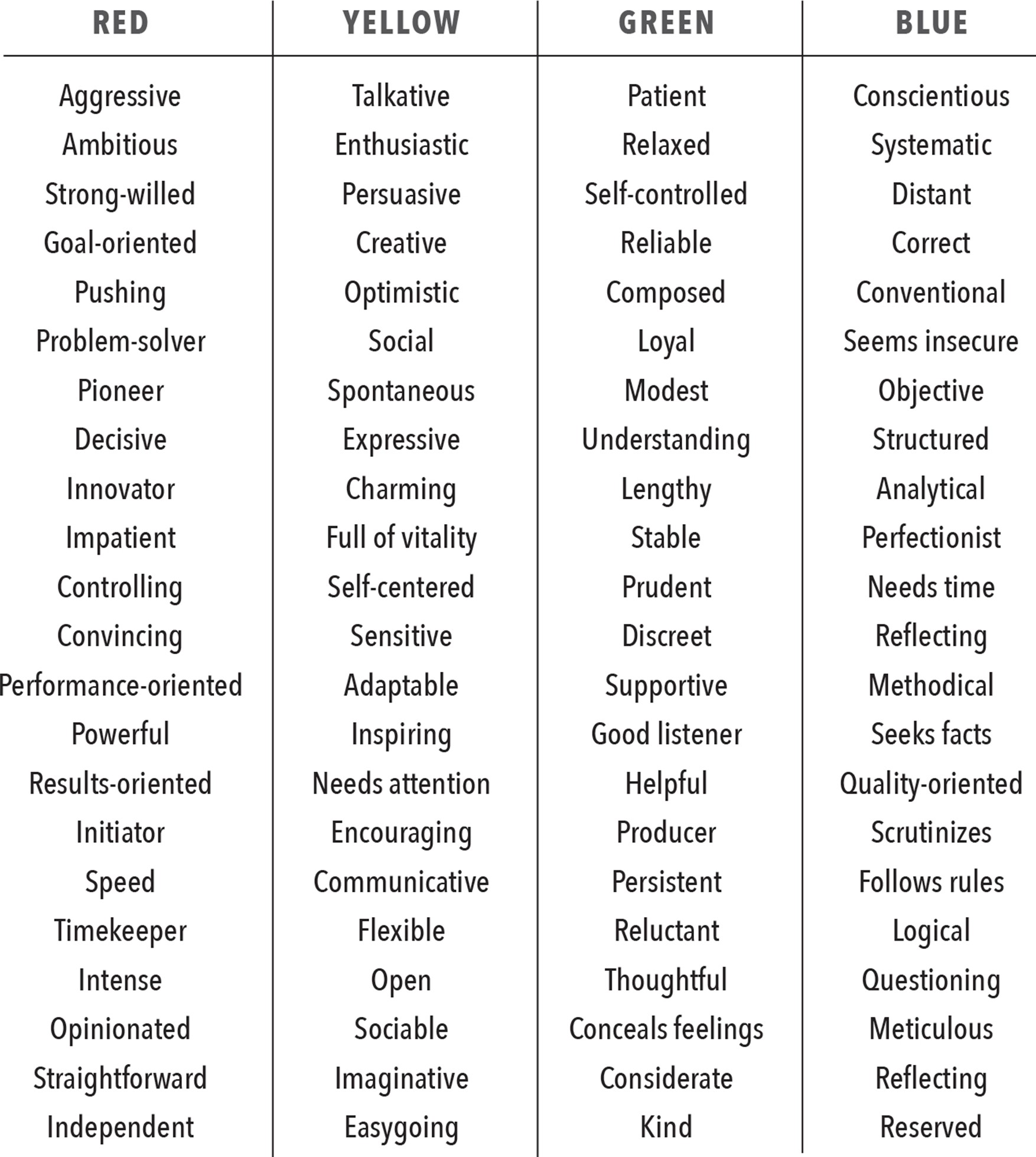【橘猫推书】
Surrounded by Idiots
The Four Types of Human Behavior
and How to Effectively Communicate with Each in Business and in Life
By Thomas Erikson
Introduction
The Man Who Was Surrounded by Idiots
I was in high school when I first noticed that I got along better with certain people rather than others. It was easy to talk to some of my friends; in any conversation, we always found the right words and everything just flowed smoothly. There were never any conflicts, and we liked one another. With other people, however, everything just went wrong. What I said fell on deaf ears, and I couldn't understand why.
Why was speaking to some people so easy, while others were total blockheads? Since I was young, this certainly wasn't something that kept me awake at night. However, I still remember puzzling over why some conversations flowed naturally, while others didn't even start—no matter how I conducted myself. It was just incomprehensible. I began using different methods to test people. I tried to say the same things in similar contexts just to see what reaction I got. Sometimes it actually worked and an interesting discussion developed. On other occasions, nothing happened at all. People just stared at me as if I were from another planet, and sometimes it really felt that way.
When we're young, we tend to think of things very simply. Because some people in my circle of friends reacted in a normal way that meant, of course, that they were automatically the good guys. And so I just assumed there was something wrong with the people who didn't understand me. What other explanation could there possibly be? I was the same all the time! Certain people just had something wrong with them. So I simply began to avoid these weird, difficult people because I didn't understand them. Call it the naïveté of youth if you will, but it did give rise to some amusing consequences. In later years, however, all of this changed.
Life went on with work, family, and career, and I continued to pigeonhole people into two groups—good and sensible people and all the rest, the people who didn't seem to understand anything at all.
When I was twenty-five years old, I met with a man who was self-employed. Now in his sixties, Sture had founded his own business and built it up for many years. I was given the task of interviewing him just before a new project was to be implemented. We started talking about how things were functioning in his organization. One of the very first comments Sture made was that he was surrounded by idiots. I remember laughing at the time because I thought it was a joke. But he truly meant what he said. His face turned crimson as he explained to me that the people working in Department A were complete idiots, every single one of them. In Department B you found only fools who understood nothing at all. And he hadn't even come to Department C yet! They were the worst of all! They were so weird that Sture couldn't fathom how they even made it to work in the mornings.
The more I listened to him, the more I realized that there was something very odd about this story. I asked him if he really believed that he was surrounded by idiots. He glared at me and explained that very few of his employees were worth having.
Sture had no issue letting his employees know how he felt. He didn't hesitate in the least to call anyone an idiot in front of the whole company. This meant that his employees learned to avoid him. No one dared to have one-to-one meetings with him; he never got to hear bad news because he would often shoot the messenger. At one of the offices, a warning light had even been mounted at the entrance to the building. Discreetly placed above the reception desk, the light went red when he was there and turned green when he was away.
Everyone knew about this. Not only staff but even clients would automatically cast a nervous glance at the light to find out what awaited them when they stepped over the threshold. If the light was red, some people would simply turn back at the door, deciding to come back at a more opportune time.
As we all know, when you're young you are full of great ideas. So I asked the only question I could think of: “Who hired all these idiots?” I knew, of course, that he had hired most of them. What was worse was that Sture understood exactly what I had implied. What I implicitly asked was: Who is actually the idiot here?
Sture threw me out. Later on, I was told that what he really wanted to do was fetch a shotgun and shoot me.
This incident got me thinking. Here was a man who would soon retire. He was obviously a proficient entrepreneur, highly respected for his sound knowledge of his particular line of business. But he couldn't handle people. He didn't understand the most critical, complicated resource in an organization—the employees. And anyone he couldn't understand was simply an idiot.
Since I was from outside the company, I could easily see how wrong his thinking was. Sture didn't grasp that he always compared people to himself. His definition of idiocy was simply anyone who didn't think or act like him. He used expressions that I also used to use about certain types of people: “arrogant windbags,” “red-tape jackasses,” “rude bastards,” and “tedious blockheads.” Although I never called people idiots, at least not so they could hear me, I had obvious problems with certain types of people.
It was an utterly appalling thought to have to go through life constantly thinking that I was surrounded by people who were impossible to work with. It would make my own potential in life so unbelievably limited.
I tried to see myself in the mirror. The decision was easy to make. I didn't want to be like Sture. After a particularly toxic meeting with him and some of his unfortunate colleagues, I sat in the car with a lump in my stomach. The meeting had been a total disaster. Everyone was furious. There and then I decided to learn what is probably the most important knowledge of all—how people function. I would be encountering people for the rest of my life, no matter what my profession was, and it was easy to see that I would benefit by being able to understand them.
I immediately began to study how to understand the people who initially seem so difficult. Why are some people silent, why do others never stop talking, why do some people always tell the truth while others never do? Why do some of my colleagues always arrive on time, while others rarely manage to? And even why did I like some people more than others? The insights I gained were fascinating, and I've never been the same since I began this journey. The knowledge I acquired has changed me as a person, as a friend, as a colleague, as a son, as a husband, and as the father of my children.
This book is about what is perhaps the world's most widely used method to describe the differences in human communication. This method is called the DISC—an acronym that stands for Dominance, Inspiration, Stability, and Compliance ability—system. These four terms are the primary behavior types, which describe how people sees themselves in relationship to their environment. Each of these behavior types are associated with a color—Red, Yellow, Green, and Blue. I have used variations of this tool for over twenty years with excellent results.
But how do you become really, truly proficient at handling different types of people? There are, of course, various methods. The most common method is to research the matter and learn the basics. But learning the theoretical part doesn't make you a world-class communicator. It's only when you begin using this knowledge that you can develop real and functioning competence in the field. Just like learning to ride a bike—you have get on the bike first. Only then do you realize what you need to do.
Since I began studying how people function and painstakingly strove to understand the differences in the way we communicate, I've never been the same. I'm not as categorical anymore, judging people just because they are not like me. For many years now, my patience with people who are the complete opposite of me has been far greater. I wouldn't go so far as to say that I never get involved in conflicts, just as I wouldn't try to convince you that I never lie, but both these things happen very seldom now.
I have one thing to thank Sture for—he awakened my interest in the subject. Without him, this book would probably never have been written.
What can you do to increase your knowledge about how people relate and communicate? A good start may be to keep reading this book—the whole book, not just the first three chapters. With a little luck, in a few minutes you can begin the same journey I began twenty years ago. I promise you will not regret it.
One thing to note: To simplify reading this book, I have chosen to use “him” and “he” consistently when I refer to examples not associated with any specific person. I know that you have enough imagination to insert a “her” or “she” in your thoughts where this may be appropriate

1 Communication Happens on the Listener's Terms
Does that sound strange? Let me explain. Everything you say to a person is filtered through his frames of reference, biases, and preconceived ideas. What remains is ultimately the message that he understands. For many different reasons, he can interpret what you want to convey in a totally different way than you intended. What is actually understood will, naturally, vary depending on who you are speaking to, but it is very rare that the entire message gets through exactly as you conceived it in your mind.
It may feel depressing knowing that you have so little control over what your listener understands. No matter how much sense you would like to knock into the other person's head, there's not that much you can do about it. This is one of the many challenges of communication. You simply can't change how the listener functions. However, most people are aware of and sensitive to how they want to be treated. By adjusting yourself to how other people want to be treated, you become more effective in your communication.
Why Is This So Important?
You help other people understand you by creating a secure arena for communication—on their terms. Then the listener can use his energy to understand rather than to consciously or unconsciously react to your manner of communicating.
All of us need to develop our flexibility and so be able to vary our style of communication, adapting it when we speak to people who are different from us. Here we find another truth: No matter what method you choose to communicate with, as an individual, you will always be in the minority. No matter what kind of behavior you have, the majority of people around you will function differently from you. You can't just base your method of communication on your own preferences. Flexibility and the ability to interpret other people's needs is what characterizes a good communicator.
Knowing and understanding another person's style of behavior and method of communication will result in more educated guesses about how a person may possibly react in various situations. This understanding will also dramatically increase your ability to get through to the person in question.
No System Is Perfect
Let me be clear about one important point: This book doesn't claim to be totally comprehensive with respect to how we, as people, communicate with each other. No book can do that, because the number of signals we constantly transmit to those around us wouldn't fit into any book. Even if we could include body language, the differences between male and female dialogue, cultural differences, and all the other ways to define variations in communication, we wouldn't be able to write everything down. We could add psychological aspects, graphology, age, and astrology and still not get a 100 percent complete picture.
According to the American Journal of Business Education (July/August 2013), more than 50 million assessments have been made using the DISC tool. And yet even with all this information communication remains a fascinating and puzzling topic. People are not Excel spreadsheets. We can't calculate everything. We're way too intricate to be described in full. Even the youngest child is far more intricate than anything that could be conveyed in a book. However, we can avoid the most blatant blunders by understanding the basics of human communication.
It's Been Going On for a While
“We see what we do, but we do not see why we do what we do. Thus, we assess and appraise each other through what we see that we do.”
These words come from the psychoanalyst Carl Jung. Different behavior patterns are what creates dynamism in our lives. When I refer to behavior patterns, I don't just mean how a person acts in a single instance (his actions) but rather the whole set of attitudes, beliefs, and approaches that govern how a person acts. We can recognize ourselves in certain behavior patterns, but other forms of behavior we neither recognize nor understand. Besides, each of us acts differently in different situations, which can be a source of either joy or irritation for those around us.
Though individual actions can, of course, be right or wrong, there is really no pattern of behavior that is right or wrong. There is no such thing as proper behavior or incorrect behavior. You are who you are, and there's no point in wondering why. You're fine no matter how you're wired. No matter how you choose to behave, no matter how you are perceived, you are fine. Within reasonable limits, of course.
In a perfect world, it would be easy just to say, “I'm a particular kind of person and it's okay because I read it in a book. That's just how I am and this is how I act.” Sure, wouldn't it be great not to have to mishandle your own behavior? To always be able to act and behave precisely as you feel at the time? You can do that. You can behave exactly as you wish. All you have to do is find the right situation in which to do so.
There are two situations in which you can just be you:
The first situation is when you're alone in a room. Then it doesn't matter how you speak or what you do. It doesn't hurt anyone if you scream and swear or if you just want to sit silently and ponder the great mysteries of life or wonder why fashion models always look so mad. In your solitude, you can behave exactly the way you feel. Simple, isn't it?
The second situation where you can completely be yourself is when all the other people in the room are exactly like you. What did our mothers teach us? Treat others as you want to be treated. Excellent advice and very well intentioned. And it works, too—as long as everyone is just like you. All you need to do is make a list of all the people you know who believe, think, and act exactly like you in all situations. Now just give them a call and start hanging out.
In any other situation, it might be a good idea to understand how you are perceived and to learn how other people function. I don't think I will make headlines by saying that most people you meet aren't like you.
Words can have incredible power, but the words we choose and how we use them vary. As you have seen from the title of this book, there are different interpretations of—yes, you got it—words. And when you use the wrong word, well, maybe then you're an idiot.
Surrounded by Idiots—or Not?
What does this actually mean? As I was writing, the following analogy hit me: Behavior patterns are like a toolbox. All types are needed. Depending on the occasion, a tool can sometimes be right and sometimes be wrong. A thirty-pound sledgehammer is great for tearing down walls, but it's hardly the thing if you want to hang a picture in the foyer.
Some people are opposed to the idea of sorting people into different behavior types. Maybe you believe that you shouldn't categorize people in that way, that it's wrong to pigeonhole people. However, everyone does it, perhaps in another way than I do in this book, but we all register our differences nonetheless. The fact remains that we are different, and in my opinion, pointing that out can be something positive if you do it in the right way. Improperly used, every tool can be harmful. It's more about the person using it than the tool itself. This book is your introduction to human behavior and dialogue. The rest is up to you.
Parts of what you are going to read I have gathered from TTI Success Insights. I would like to take this opportunity to thank Sune Gellberg and Edouard Levit for so generously sharing both their experience and their training materials.
No Matter How Strange It Might Seem, in Theory, Every Kind of Behavior Is Normal
Normal Behavior …
… is relatively predictable.
Every person reacts in a habitual manner in similar situations. But it's impossible to predict every possible reaction before it happens.
… is part of a pattern.
We often react in consistent patterns. Therefore, we should respect one another's patterns. And understand our own.
… is changeable.
We should learn to listen, act, speak openly, and reflect in order to do what is relevant right now. Everyone can adapt.
… can be observed.
We should be able to observe and consider most forms of behavior without being amateur psychologists. Everyone can take note of the people around them.
… is understandable.
We should be able to understand why people feel and do what they do—right now. Everyone can think about why.
… is unique.
Despite the conditions that we have in common, each person's behavior is unique to him. Succeed in your own conditions.
… is excusable.
Dismiss personal jealousy and complaints. Learn to have tolerance and patience, both with yourself and with others.
3 An Introduction to the System
At the end of this book you will find a description of the background to how the DISC system emerged, but since you probably want to dive into its most interesting elements—how everything works in practice—you can just read on. Otherwise, you can always go directly to page 228.


As you can see, there are four main categories of behavior types, each of which is associated with a color. This book is about how you can recognize them. Quite soon, as you start reading about the different colors, various faces will come to mind. Sometimes, maybe, even your own.
About 80 percent of all people have a combination of two colors that dominate their behavior. Approximately 5 percent have only one color that dominates behavior. The others are dominated by three colors. Throughout the book I focus on the single colors individually because they are the fundamental components of a person's behavior. It's like a recipe—we need to understand all the ingredients before we bake the cake. Entirely Green behavior, or Green in combination with one other color, is the most common. The least common is entirely Red behavior, or Red behavior in combination with one other color.

Many people you meet possess qualities that you sometimes wish you had—you may even feel jealous of these people. They easily master things that you struggle with. Maybe you'd like to be more decisive like Reds, or maybe you wish it were easier for you to interact with strangers, like Yellows. Possibly, you wish that you didn't stress so much, that you could just take it easy like Greens do, and perhaps you wish that you could keep your schedule in better order, something that's natural for Blues.
Naturally, it works the other way as well. You are going to read things that will help you realize that you too boss others around a bit too much, just like Reds tend to do. Or that you talk way too much, something that Yellows do. It might be that you take things way too easy, not getting involved in anything, the Greens' weakness. Or you're always suspicious of everything, seeing risks everywhere, just like Blues. Here you can learn to see your own pitfalls and how you can take appropriate measures to get around them.
No matter what you learn about yourself and others, take notes, underline things, and engage with the material.
